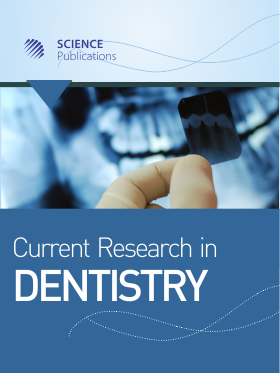Differential Expression of Cellular and Exosomal MicroRNA Isolated from Oral Cancer Cells and their Resistance to Chemotherapy
- 1 Department of Advanced Education in Orthodontics, University of Nevada, Las Vegas-School of Dental Medicine, United States
- 2 Department of Clinical Sciences, University of Nevada, Las Vegas-School of Dental Medicine, United States
- 3 Department of Exercise Sciences, Utah Valley University, United States
- 4 Department of Biomedical Sciences, University of Nevada, Las Vegas-School of Dental Medicine, United States
Abstract
MicroRNAs are abundant small non-coding RNA with a variety of known functions, including transcriptional activation and inhibition. Recent evidence has suggested that microRNA expression may influence the responsiveness of some cancers to chemotherapy, including liver and lung cancers. Some evidence has now suggested that specific microRNAs, such as miR-21, miR-155, and miR-375, may influence oral cancer responsiveness to chemotherapy – although much remains to be discovered. Based on the lack of evidence in this area, the primary objective of this study was to evaluate microRNA expression and responsiveness among oral cancers. Five commercially available oral cancer cell lines (SCC4, SCC9, SCC15, SCC25, CAL27) were obtained from ATCC and cultured and chemotherapy resistance to Cisplatin, Fluorouracil or 5-FU and Paclitaxel or Taxol was assessed. Exosomes were then isolated, confirmed, and processed using Particle Metrix Nano Tracking Analysis (NTA) Subsequently, RNA was isolated from both the exosomes and cellular fractions and qPCR screening was performed to determine the expression of microRNA from cellular and exosomal isolates. Growth assays revealed that SCC15 assays were the least resistant, while CAL27 and SCC4 cells exhibited moderate resistance, and SCC9 and SCC25 cells exhibited strong and differential resistance to these chemotherapeutic agents. The screening revealed all cancers expressed miR-21 and miR-133 with differential expressions of miR-27, miR-135, miR-155, and miR-375 observed. However, the most resistant cell lines, SCC9 and SCC25, were the only cells to express miR-375 and were also the only cells that did not express miR-27, suggesting an association between chemotherapeutic resistance and expression of these specific microRNAs. In addition, miR-21 and miR-133 were identified in exosomes from all oral cancers with differential results observed with miR-133 and miR-135-although miR-27 and miR-375 were not found among any exosomes. Although much remains to be elucidated about the functional roles of these differentially expressed microRNAs, the findings of this study suggest that specific microRNAs including miR-27 and miR-375 may, in fact, function in distinct, different, and opposite pathways among these cell lines. Future research endeavors will need to evaluate the potential role of these microRNAs not only to validate their predictive capabilities as biomarkers but also to ascertain which functional pathways may be involved in the development and progression of oral cancers.
DOI: https://doi.org/10.3844/crdsp.2022.11.22

- 4,510 Views
- 2,583 Downloads
- 2 Citations
Download
Keywords
- Oral Cancer
- Exosome
- MicroRNA
